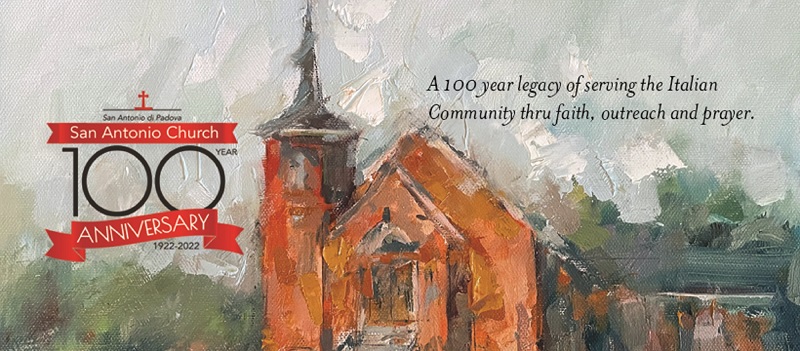We would like to thank everyone who has continued to contribute to the ongoing expenses of San Antonio Church by mailing in their weekly envelopes or by contributing electronically utilizing WeShare . The buttons at the bottom of this post allow you to make online donations directly to the listed account for San Antonio Church.
Weekly Bulletin March 19, 2023
by Terrie Evans
On this 4th Sunday in Lent, we recognize Laetare Sunday, 21 days before Easter Sunday and the halfway point of Lent. Laetare in Latin means “rejoice” to encourage us that our time of sacrifice is nearing an end and we will soon experience the great joy of Easter Sunday. In the churches history, this day was known as the Sunday of Five Loaves, recalling the miracle of the loaves and fishes. Laetare Sunday is also referred to as Mothering Sunday, a day for all Christians to visit their mother church, the place in which they received the Sacrament of Baptism. On this Sunday, servants were released from service to attend church also called Refreshment Sunday, or Rose Sunday for the use of rose-colored vestments that are permitted and used on this day along with flowers being allowed on the altar. On Laetare Sunday at the Station Church in Rome, Pope Francis will honor Catholic Sovereigns by bestowing them with a blessed Gold Rose in honor of their service to the Catholic Church.
The Golden Rose is blessed by Popes and given as an award to churches and shrines throughout the world. On March 25, 1419, Pope Martin V bestowed a Golden Rose composed of a branch with 9 roses with a sapphire at the center to the City of Florence where he celebrated a solemn Mass at the Basilica of Santa Maria Novella. The Golden Rose is also given to men, women and one married couple (In 1452 to Frederick Holy Roman Emperor and Empress Eleonora) as well as to states. Pope Urban created the Golden Rose during his Pontificate which began in 1088 and has been given to Godly Rulers since 1096 and to churches, Our Lady of Lourdes in France, Our Lady of Fatima in Portugal and in Mexico, Our Lady of Guadalupe. After the Mass, the Golden Rose is carried in a procession to the Sacristy where it will stay until presented to some worthy personage.
Also on this Sunday, in South Bend, Indiana, the University of Notre Dame will bestow the Laetare Medal to this year’s recipient. It is given to American Catholics or a group of Catholics who have illustrated the ideals of the church while enriching the heritage of humanity. A candidate for this prestigious award must be a practicing American Catholic who by their profession or intellectual life has made a distinctive Catholic Contributions. Potential recipients are named by the faculty and staff at the university with 2 or 3 Candidates from the original pool will be voted on by the Officers of the University. The Laetare Medal first awarded in 1883 is the oldest and most prestigious award given to American Catholics.
On Monday, March 19th we honor the feast day of Saint Joseph (Festa de San Giuseppe) which is a major holiday in Italy for the much-revered saint who is the husband of the Virgin Mary and the legal father of Jesus Christ. Traditional events taking place will be a parade led by the Holy family: Mary, Joseph and Jesus portrayed by townspeople who will then be guests of honor at the banquet held in St. Joseph’s honor. March 19th is also Father’s Day in the Catholic Countries of Spain, Portugal and Italy and is the name day for those christened Josephine or Joseph and for religious institutes, schools, parishes bearing his name. Saint Joseph is recognized throughout Canada where he is the Patron Saint of their Country. There is the legend that Saint Joseph interceded to relieve the famine in Sicily. During the Middle Ages there was a severe draught and many faithful prayed to their Patron saint to bring them rain and when it did come, a banquet was prepared in thanksgiving.
At that time, the fava bean crop was the one staple that saved the residents from starvation and to this day fava beans are used as part of this tradition on his feast day for their tables and altars which has spread throughout the United States in the 1800’s. The Saint Joseph’s Day altar is made into three sections to represent the 3 persons of the Trinity with a statue of the saint, flowers, limes, candles, wine, fava beans, cakes, breads, cookies and zeppoles and to represent Saint Joseph being a carpenter, foods containing breadcrumbs representing (dust) will also be shared to those in need on Saint Joseph’s Day. Saint Joseph is considered the Guardian of the Spiritual Home and is the Patron Saint of the dying. On his own death, Saint Joseph died with Jesus and Mary by his side the way most of us would prefer to leave this earth surrounded by loved ones.
